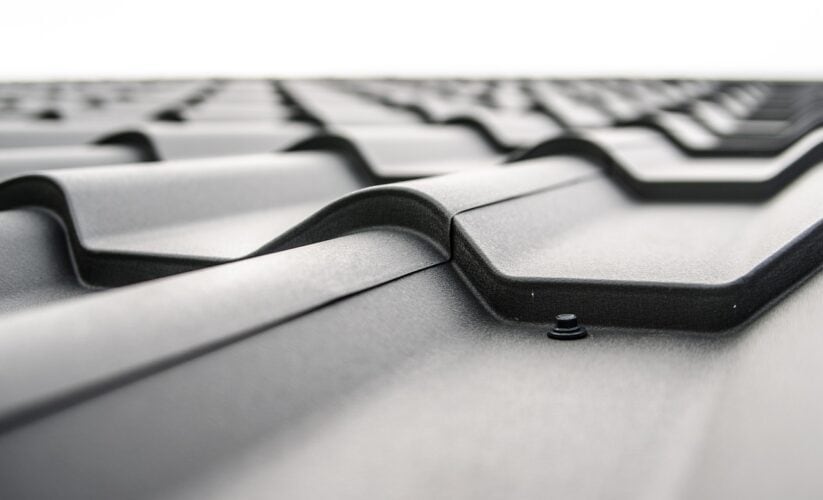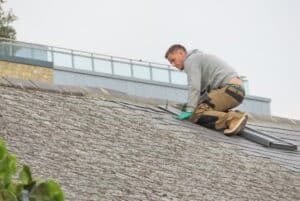
How to Properly Maintain Your Roof: A Comprehensive Guide
Your roof is your home’s first line of defense against harsh weather elements. Keeping up with routine maintenance can prevent costly repairs and extend the lifespan of your roof.
Regular visual inspections can help you spot problems early, like cracked or damaged shingles. Here are nine important roof maintenance tips:
Clean Your Gutters Regularly
Cleaning your gutters is one of the most important things you can do to keep your roof in good condition. Over time, leaves and debris can build up in your gutters, which can cause water damage to your roof. Cleaning your gutters regularly helps ensure that the water can drain off of your roof and into the downspouts where it should go.
Another thing to consider is keeping tree limbs away from your roof. If a tree limb is too close to your roof, it can damage the shingles or even cause a tree branch to fall on your house during a storm. Regularly trim the limbs of trees that are close to your home. You should aim to have a six-foot or more clearance between tree branches and your roof.
Other roof maintenance tasks include removing moss and algae. You can use a brush or power washer to remove the growth. Once the growth has been removed, you can apply a moss or algae retardant to prevent it from growing back.
Finally, it is important to maintain proper attic ventilation. If there is too much heat building up in the attic, it can damage the shingles and shorten their lifespan. This can also lead to moisture issues in other areas of the home.
In addition to these routine maintenance tasks, you should perform a visual inspection of your roof at least twice a year, preferably in the spring and fall. This will help you identify and address problems before they become major issues that require costly repairs. The inspection should include examining the flashing, drainage systems, and the integrity of shingles. You should also look for signs of pest infestations, such as chew marks or nests.
Keep Branches Away From Your Roof
Trees add beauty and value to your property, but if they’re not properly maintained, they can damage your roof. Overhanging branches can scrape the surface of shingles, which can cause them to crack, peel, or even dislodge. They can also block out the sun, allowing moss to take root and rot the underlayment of your roof. Finally, they can fall during severe weather and injure or even destroy your home.
Regular pruning is the best way to avoid these problems. A minimum of 6 to 10 feet should be maintained between trees and the top of your roof to prevent physical contact. For taller or older trees, the optimal distance can be even further.
When a branch falls on your roof, it can scrape or otherwise damage the shingles and compromise the outer layer of asphalt that protects them. It can also puncture or tear the gutter system, causing water seepage and potential structural damage to your home.
If you have any overhanging branches, have them trimmed by a professional to keep them safe and prevent impact damage to your roof. This process should include removing dead limbs, thinning dense foliage to allow for more sunlight, and trimming the tips of high branches. It should also include an inspection of your roof to ensure that it is free from damage caused by the removed limbs and to detect any other issues. It is recommended that you use a licensed, reputable tree service to perform this work to help ensure safety and accuracy. They’ll have the tools and knowledge to remove the branches safely and without causing any further damage to your roof or the surrounding trees.
Clean the Attic
Attics are often used for storage and easily become cluttered with old holiday decorations, toys, and clothing. It’s a good idea to clean out the attic once or twice a year. This will prevent dust accumulation and keep your home healthy and energy efficient.
It’s important to wear a mask and rubber or plastic gloves during this process, as mold and pest infestations can be problematic. It’s also a good idea to take the opportunity to go through items to determine what can be kept, donated, or discarded.
Ensure that you have the necessary tools before you start cleaning, such as a ladder, broom, dustpan, and vacuum with a HEPA filter. You’ll also need some cleaning supplies like all-purpose cleaner, paper towels, rags, and disinfectant. It’s a good idea to wear safety goggles and a face mask when cleaning in an attic space to avoid breathing in harmful materials.
When you’re ready to begin cleaning, turn on a light so that you can see what you’re doing. You’ll want to look for areas of damp insulation, signs of rodents like droppings or gnawed containers, and any other indications of pest activity.
You’ll also want to sweep the attic floor and vacuum all flooring pieces, paying special attention to corners and crevices. Finally, wipe down all surfaces with a soft cloth and a little bit of detergent or water. This will help remove stubborn dirt and stains, as well as kill any bacteria that may be growing in the attic. This is also a good time to check that all vents are working properly. If you notice any issues, it’s a good idea to call in a professional for a roof inspection and repair.
Check Your Shingles

Your roof is your home’s first line of defense against the elements. It is a major investment and it needs to be cared for to protect your home for years to come. A few simple maintenance tasks can extend your roof’s lifespan and prevent costly repair bills.
Performing a visual inspection of your shingle roof is an important part of regular roof maintenance. This will allow you to see any damaged shingles and address them immediately to avoid water leaks or further damage. Look for any shingles that are cracked, curled or missing. Make sure that all shingles are intact and secure, especially during high winds.
In addition, look for any areas of your roof that have dark stains. This can be caused by moss or algae. Both can cause damage to shingles by trapping moisture against the surface. Moss and algae also deteriorate the asphalt coating of the shingles. To reduce the growth of these organisms on your shingle roof, regularly clean your roof using a soft-bristle broom or leaf blower. You can also spray the shingles with a 50-50 mixture of bleach and water to kill any growth.
It is also important to check the integrity of the flashing around chimneys, dormers and skylights. It is important that this flashing is properly caulked to ensure no water can infiltrate your home through these areas.
Inspect Your Roof After Winter Storms
Your roof is your home’s first line of defense against snow, ice, wind, and freezing rain. It takes a beating during winter storms, and regular roof inspections are essential to ensuring that it holds up well. For expert guidance and professional service, consider working with roofing milwaukee specialists who can help with everything from inspections to repairs.
If you’re able to inspect your roof on your own, be sure to do so from a safe distance—you don’t want to have to climb up there! Instead, you can use binoculars to help you spot issues that you might not be able to see with your naked eye. Checking for sagging areas of the roofline, broken or missing shingles, and any other signs of damage is key. You should also check that your gutters are free of ice, leaves, or debris and that the flashing around chimneys, vents, skylights, and other penetrations is in good condition.
It’s important to take note of any cracking or peeling shingles as these are signs that the roof is deteriorating and need to be replaced. You should also check for any moss or mold growth on the surface, which can be indicative of moisture infiltration. Finally, it’s a good idea to look for any animal entry points in the attic and roof spaces—this can be a sign that animals have been sheltering there during winter storms.
While you can spot a lot of winter roof damage on your own by doing regular inspections, it’s always best to have a professional inspect it before and after any major winter storms. This will help ensure that any repairs are made promptly and prevent costly problems down the road. Additionally, keeping records of routine maintenance and any damage that has occurred can be helpful if you ever need to file an insurance claim for storm-related damages.





